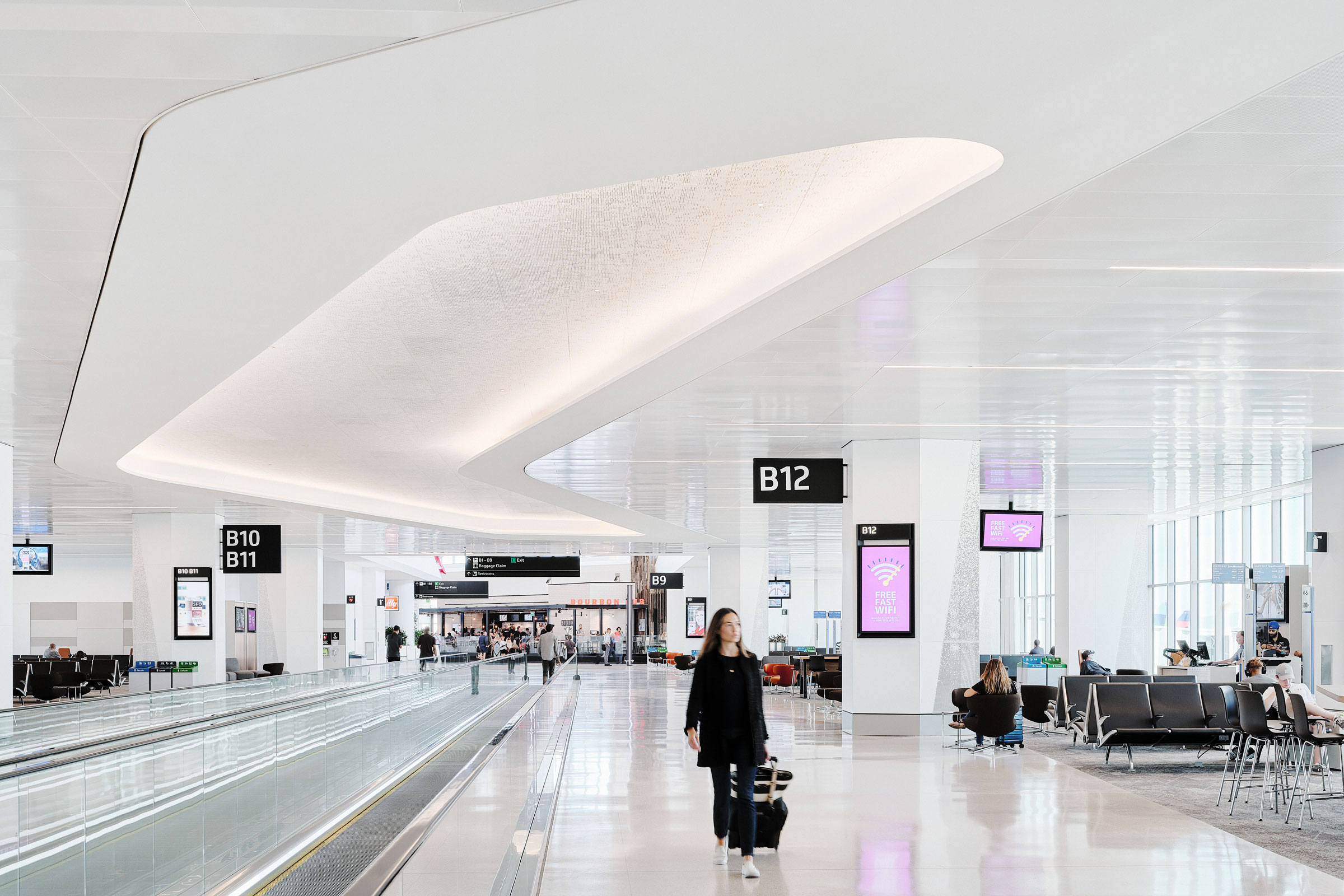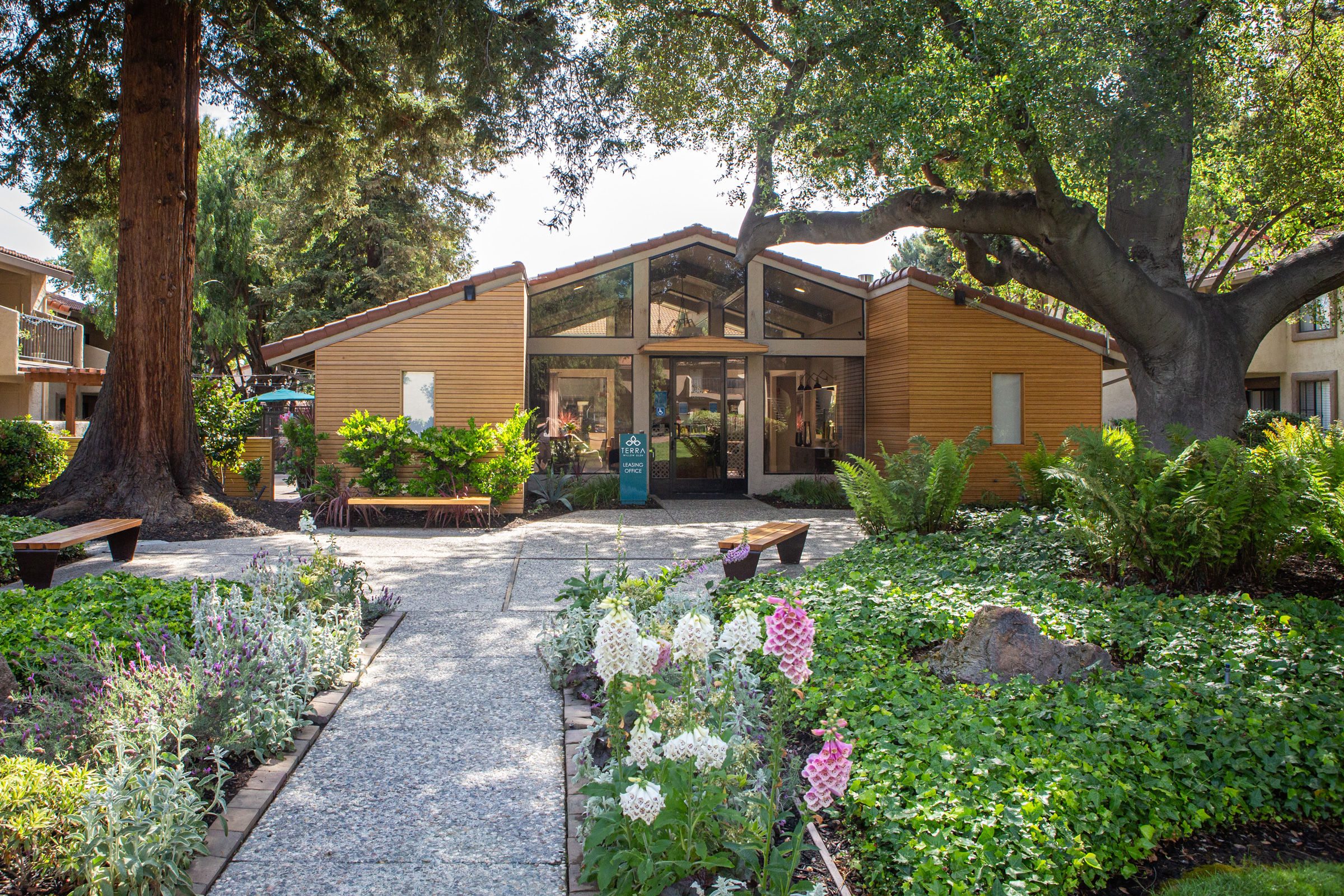Story at a glance:
- New Energy Works designed this house with plentiful shou sugi ban—a nod to the clients’ love of Japan.
- Intentional choices add up in this lakefront home, as the owners get the look they want without sacrificing sustainability.
A circle of clerestory windows wraps around the house on Lake Lanier in Georgia, exuding a warm, welcoming light at the end of each day. The design was envisioned to create the effect of a lantern that would light up at night, says architect David Shirley of New Energy Works. Beneath their banner, a stylized interpretation of a Japanese torii gate flanks the front door, demarcating the divide between the world outside and the sacred sanctuary of home.
This symbolism is especially meaningful for the clients. “It was both a nod to the clients’ time in Japan and a welcoming symbol as you go into their house,” Shirley says. Another nod to the clients’ time in Japan is one of the first things you notice looking at the house: its use of shou sugi ban, a Japanese technique of charring wood siding to render a dark, dynamic hue that evolves with time. These are a few of the personalized elements Shirley incorporated into the design after working closely with the clients to understand their aesthetic and practical needs.
The clients wanted a contemporary look for their timber frame home, and Shirley delivered a design centered around a palette of wood, stone, and steel—the latter of which is another personal touch, as the clients worked in the metal industry. Entering the house on the top level, Shirley kept the floor plan open for the main living area. Creating such an expansive space allows for lakefront views throughout the area, which is connected to a wraparound deck overlooking the lake.

The house was designed by New Energy Works with reclaimed wood from Pioneer Millworks and fine woodworking from NEWwoodworks. Photo by Garey Gomez
The design choice came with challenges Shirley enjoyed solving. “We got to play with fun engineering because with these open floor plans, you don’t want posts coming down in the middle of your floor,” he says. The solution? An upside-down parallel chord truss runs overtop the kitchen and living room areas, providing structural support as well as visual interest with the dark metal popping against the warm wood tones throughout the space.
The clients requested sustainable and, when possible, reclaimed wood. Douglas fir, a classic option, was used for the house’s timber frame, tongue and groove ceilings, and the trim around windows and floorboards. A species less known, but no less sustainable, was chosen for the deck. Larch’s strength, rot resistance, and distinctive grain make it a solid choice for exterior use, and as an underutilized species grown in abundance, it’s an option Shirley says New Energy Works is using more and more.

During the day the clerestory windows provide panoramic views of the lake, creating the effect of being enmeshed with the natural environment. Some are even operable, serving as a heat chimney during humid southern summers. Photo by Garey Gomez
The kitchen is equipped with cabinets crafted from sustainably harvested walnut and an island countertop created from reclaimed white oak. “Reclaimed wood has a story. Reclaimed wood has a lot of character. A lot of people are attracted to that, and that certainly was something that brought them to the table with us because that’s our specialty,” Shirley says.
These kinds of aesthetic features are often what draw a client to an architect or firm, and while New Energy Works is known for producing beautiful designs, they also offer something else with their High Performance Made Easier, or HPEz, enclosure system—and the two are not mutually exclusive. “This project represents a good compromise between high design and high performance in that we didn’t make any sacrifices to the aesthetics, but we were able to bring in some high-performance features,” Shirley says.
The company has focused in recent years on refining its HPEz system, which utilizes structurally engineered roof and wall panels, digitally designed and cut in-house, as the building envelope. Once deployed to the site, the panels are quicker to assemble than a traditional stick frame structure, and the nature of this type of building envelope ensures a continuous layer of exterior insulation around the building frame.
That uninterrupted expanse of insulation provides numerous benefits to the client—among them an energy-efficient home. Although the system costs more upfront, it translates to lower energy bills over the life of the house—a savings Shirley predicts will become more pronounced as energy costs continue to rise.
There’s another benefit to the high-performance system that’s not as tangible as saved money, but just as valuable, too. “It’s quieter. The machines don’t have to work as much. You have materials that aren’t off-gassing. It feels like a more comfortable home,” Shirley says. “It feels healthy because it is healthy.”
Project Details
Location: Lake Lanier, GA
Completion: Summer 2021
Size: 3,000 square feet
Architect: New Energy Works
Engineer: Fire Tower Engineered Timber
Contractor: Coal Mountain Builders
Interior Designer: New Energy Works
Specifications: New Energy Works
Reclaimed Wood: Pioneer Millworks
Fine Woodworking: NEWwoodworks
Conceptual Design Work: Dencity

Designed as an extension of the living room, the porch is outfitted with a pergola using actuated louvers that automatically close when it starts to rain, allowing the clients to enjoy views of the lake rain or shine. Photo by Garey Gomez

Photo by Garey Gomez

The stairs, sourced with custom walnut treads from sister company NEWwoodworks, lead to the lower level of the house, where a more playful, industrial style is embraced in contrast to the refined, contemporary look of the main level. Photo by Garey Gomez



